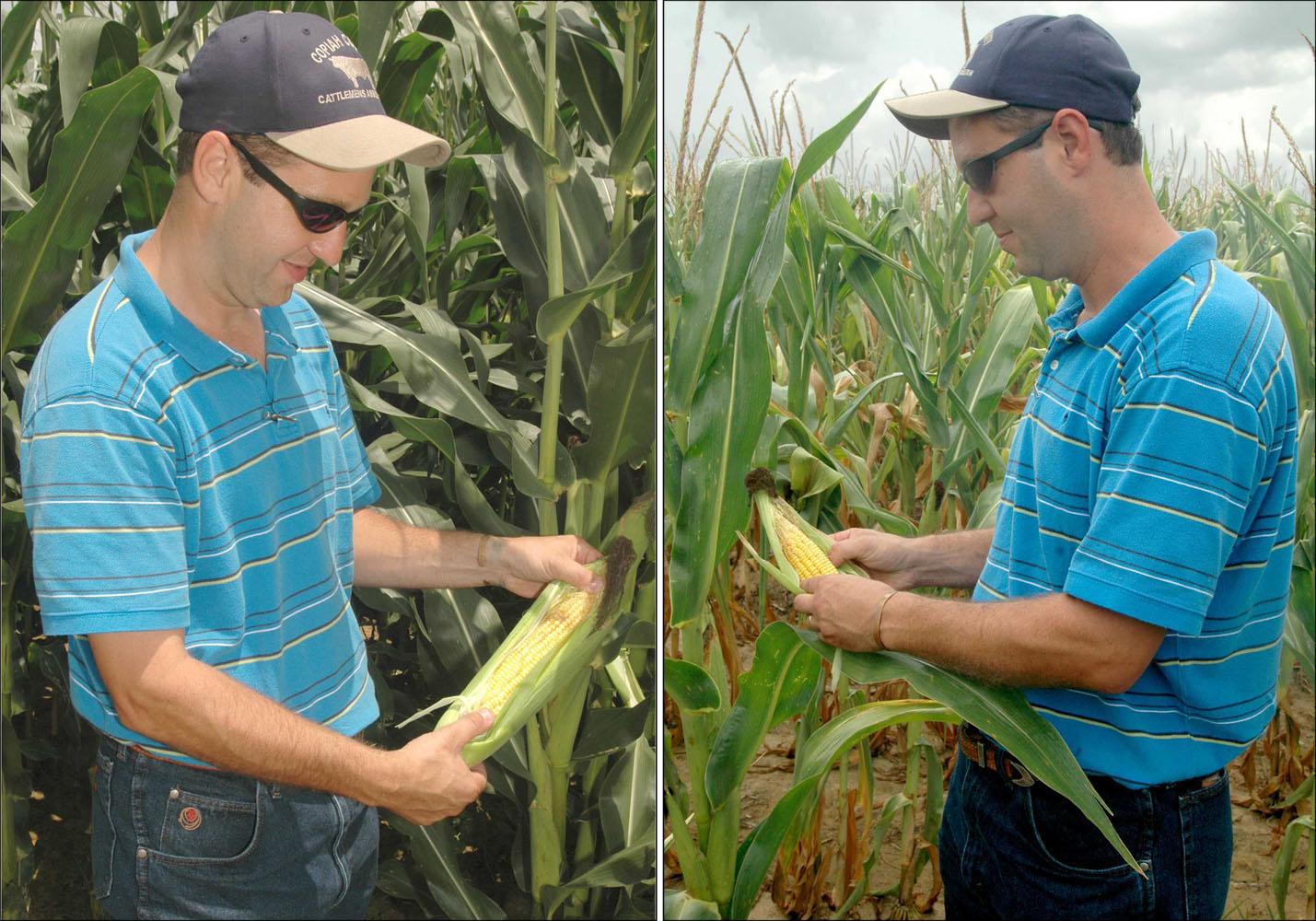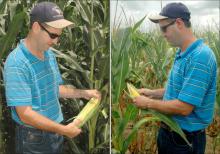Information Possibly Outdated
The information presented on this page was originally released on June 29, 2007. It may not be outdated, but please search our site for more current information. If you plan to quote or reference this information in a publication, please check with the Extension specialist or author before proceeding.
State corn yields cut by drought
MISSISSIPPI STATE – Strong prices encouraged Mississippi farmers to make corn the state's No. 1 row crop this year, but drought conditions are cutting yields.
On June 29, the U.S. Department of Agriculture estimated Mississippi producers have planted 980,000 acres of corn, up from 340,000 in 2006. Erick Larson, Mississippi State University Extension Service small grains specialist, said persistent drought conditions are reducing the yield potential of corn across much of the state.
“Corn that is not irrigated has been under stress since early in the season, and much of the crop is facing low yield potential,” Larson said. “Overall, the irrigated crop is in fair to excellent condition, depending on how well the irrigation has been managed.”
Producers considering cutting severely drought-damaged corn for hay or silage need to take precautions to protect their livestock, Larson said.
“Nitrate poisoning is a concern in drought-stressed corn, particularly in corn that has received some rainfall recently and has taken up some fertilizer in response to the moisture it has received,” he said. “We suggest that producers considering use of drought-stressed corn for livestock feed submit samples to a laboratory that can do nitrate testing to see if it is safe for livestock.”
Nitrate testing of corn can be performed by MSU's College of Veterinary Medicine Diagnostic Laboratory or the State Chemical Laboratory on the MSU campus.
Corn quality has been improved by rainfall the last two weeks of June in the Webster County area, said Dennis Reginelli, Extension area agronomic crops agent.
“The rain came at the critical development stage for most of the Webster County corn,” Reginelli said. “We still need moisture during the next month to fill out ears, but the rains the last two weeks have given us some hope.”
Reginelli also covers Noxubee County, and he said the June rainfall failed to reach that east-central part of the state.
“Noxubee County received almost no rain in May and June,” he said. “Corn on the heavier soils in the county is holding up and still has some yield potential, but producers are already cutting corn on lighter soils for hay.”
Jerry Singleton, Extension area agronomic crops agent based in Leflore County, said late June rainfall benefited corn in his area.
“Most of the crop was already looking good because about 90 percent is irrigated,” Singleton said. “The rain helped producers cut back on irrigation for a while.”
June rainfall was scattered in south Mississippi, and Copiah County Extension director Shelby Bearden said it is easy to tell which fields have and have not received rain.
“Fields that have caught some showers are holding up, but those that missed the rains have significantly reduced yield potential,” he said. “Very few of our fields in the county are irrigated, but those that are look good.”




